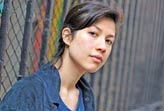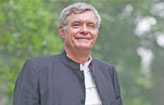Peking Opera needs appealing to audiences
Updated: 2011-05-27 10:58
By Liu Wenfeng (China Daily European Weekly)
|
 |
Peking Opera is a Chinese national treasure with a history of more than 200 years. The performances are strikingly different from Western operas, including storytelling methods and esthetic values. The Peking Opera is the most representative of Chinese traditional culture, however, it is struggling to appeal to the modern society and has the potential to be a dying art form.
Peking Opera, developed in the era of farming, inherited the essence of the Chinese classical operas. In China's last royal period, Qing Dynasty (1644-1911), to celebrate the Emperor Qian Long's birthday, the traditional opera ensembles from both the northern and southern parts of China were invited to come to the capital city of Beijing.
Having incorporated various elements of operas including the performances arts from the royal family, the Peking Opera was formed and reached its peak in Beijing. Combining singing, dancing and martial art performances, the Peking Opera is the most influential art form in China's history.
While Western operas use realism to tell a story, Peking Opera takes a formularized and symbolic approach. Makeup, costumes, a particular style of acting, and music all convey certain meanings. Singing and dancing are equally important for each actor.
The typical roles in a Peking Opera are broken down into four types: Sheng, Dan, Jing, Chou. Sheng is the main male role; Dan refers to female a role; Jing is the forceful male character and Chou takes the form of a male clown. Each character has to follow the established format of gestures, such as the movements of hands, eyes, body and feet to help differentiate each role.
During the performances, the actors use a Beijing dialect to sing songs based on Xipi and Erhuang.
Xipi songs are used to express joy and happiness, whereas Erhuang songs convey sadness. Traditional Chinese instruments are widely used to set the pace, create atmosphere and formulate the characters with the development of the story.
The Peking Opera uses simple stage settings and props, following the principle of abstract presentation of big items. There are normally just a couple of chairs and tables. Big items, such as boats, require the actors to show it by exquisite and skillful acting.
The costumes and headdresses in the Peking Opera use bright and contracting colors, showing the traditional Chinese aesthetic values. The faces are exaggerated, which displays the character's social status and personality with symbols and colors.
Chinese dramas used to only imitate life as a way of developing the art. During the Yuan Dynasty (1271-1368), Chinese dramas started to incorporate dancing and singing as the major way of expression, gradually using more symbolic and suggestive movements.
Although the Peking Opera has inherited the essence of the Chinese classical play with profound culture heritage and artistic expression, it has an inability to capture modern life in the age of industry and information.
At the beginning of the 20th century, Peking Opera artists started to reform the traditional performances to reflect modern life. Notable examples are The Legend of the Red Lantern, Shajia Village, Tiger Mountain by Strategies and Praise of Dragon River.
Basically, there are two ways of reforming the Peking Opera.
One is to learn from real life. By getting familiar with modern life, artists can add new performance elements, such as the movement of people riding bicycles, soldiers holding guns and other similar movements. On the basis of variety of stylistic conventions, those movements are developed in time with music and a faster tempo.
The second way is to introduce Western dramas, operas and films to enrich the artistic expression of the Peking Opera. By doing this, actors can learn how to express the inner world of characters and how to use facial expression to depict the characters.
In recent years, Peking Opera has attempted numerous reforms in response to declining audience numbers. These reforms, which include improving performance quality, introducing new performance movements and premiering new plays, have met with limited success.
The Peking Opera is good at conveying and demonstrating Chinese traditional arts and history, but in modern times, without many sceneries and backdrops, it is hard for the performers to demonstrate certain movements, such as driving a car or flying an airplane.
Following the lead of the West, Peking Opera directors have strove to introduce innovation on settings and lighting in recent years. However, it is important to note that the use of modern techniques in the Peking Opera to satisfy the need of contemporary audiences should not weaken the essential characteristics of the opera.
While people are increasingly enjoying a fast-paced life, the slow pace of the Peking Opera is no longer attractive to the young generation.
The Peking Opera in China has been largely marginalized by the introduction of television, film and the Internet.
Peking Opera, as a representative of China's operas, toured abroad in the first half of the last century. It showed the Asian charm and attracted much attention from Western audiences. The art form has always been considered one of the most important ways to explain traditional Chinese culture. The Peking Opera draws from history, anecdotes and folk legends, reflecting Chinese core values such as loyalty and filial piety.
It is good to see that China is gradually improving the Peking Opera. The government has raised compensation for the theater practitioners as well as created opera houses.
With the development of China's economy and frequent international communications, more Westerners have come to China to learn the Peking Opera and have even performed the show in English.
Ghaffar Pourazar, born in Iran and raised in the United Kingdom, came to China when he was 32 years old to learn the finer points of the Peking Opera. He was one of the first Westerner to finish the brutal training course at the National Academy for Traditional Chinese Opera. He has become a pioneer in the performance world, bringing the theatrical art form to Western countries.
For those who find the Peking Opera a jarring and incomprehensible collection of sounds, Pourazar adapted the Monkey King to more of a Western musical to better connect with a Western audience.
Other Peking Operas fans have come to China to study the art form as well as perform in popular talent shows on Central China Television.
In 2010, the Peking Opera was on the UNESCO Representative List of the Intangible Cultural Heritage of Humanity. I think this will raise the awareness of protecting it among the Chinese public, helping to safeguard such heritages to maintain a cultural diversity.
The author is a professor with the Chinese National Academy of Arts and president of China Opera Society.
E-paper

Thawing out
After a deep freeze in sales during the recession, China’s air conditioner makers are bouncing back
Preview of the coming issue
Cool Iron lady
Of good and evil
Specials

Memory lanes
Shanghai’s historic ALLEYS not just unique architecture but a way of life

Great expectations
Hong Kong-born singer songwriter rises to the top of the UK pops.

A diplomat of character
Belgian envoy draws on personal fascination to help build China ties.
